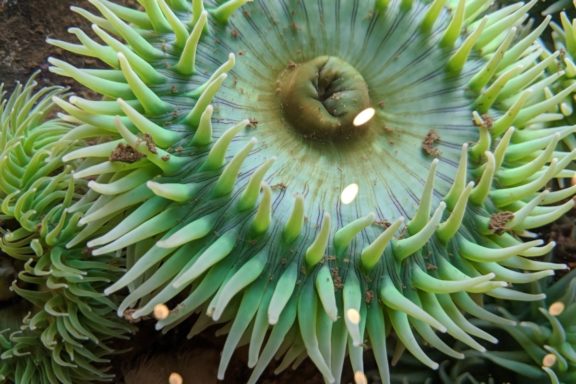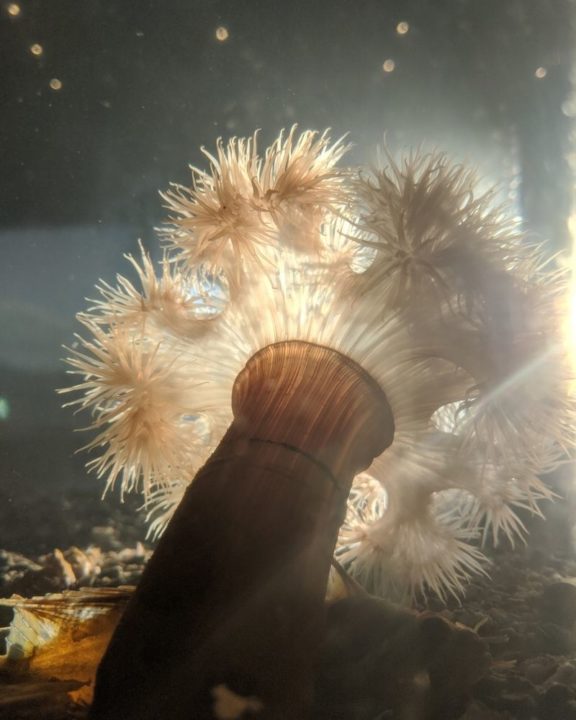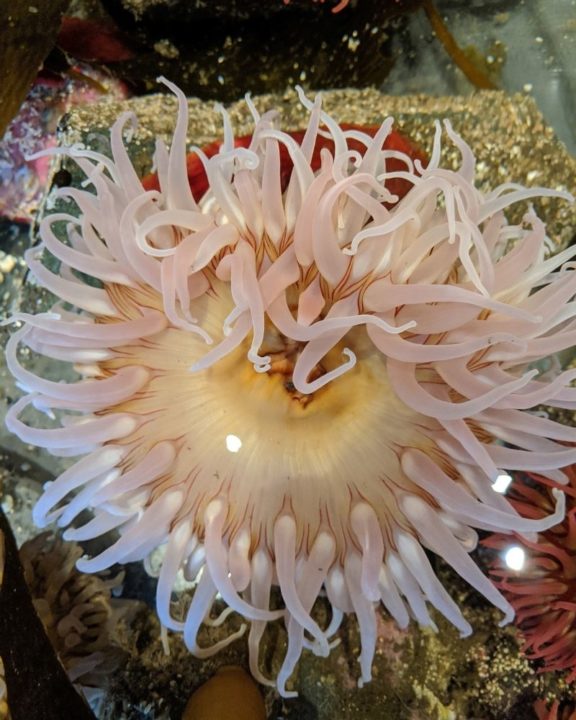Sea Anemones (ah-nem-uh-nees) were named after Anemone flowers, a family of lovely, terrestrial flowers found around much of the world. Looking at colourful Sea Anemones swaying in the ocean current, one can see why they were compared to a garden full of beautiful flowers. However, unlike their namesake, Sea Anemones are in fact fearsome, carnivorous animals! Animals that can move and swim and will use their stinging tentacles to fight each other, stun their prey, and even swallow fish whole. While not all Sea Anemones are fearsome fighters, there are more than you might think and they are not to be messed with.
Sea Anemones are tubular, soft-bodied animals with a flat base that holds them to a surface and a central mouth on top that is surrounded by iconic tentacles. They are found throughout the world’s oceans and are members of the phylum Cnidaria, a group of animals that utilize specialized stinging cells to capture prey, which also includes jellyfish and corals. An anemone’s stinging cells, called nematocysts, are found throughout the body but are primarily used in their tentacles as a hunting tool and defence mechanism. Each tentacle is equipped with thousands of nematocysts that contain a tiny, coiled, harpoon-like structure which is ejected upon contact with prey, piercing their skin and pulling them into their mouth. Luckily, most anemones don’t have large enough stinging cells to affect humans, but there are some to be wary of. If you have ever touched a small anemone, the sticky feeling you may have felt is caused by those tiny harpoons as the anemone tries to eat your finger.
Walking through the intertidal zone you may see a number of anemones that are common here on the coast of BC. We have several species that showcase some of the amazing features of anemones, from symbiotic relationships with algae to reproduction via cloning. A common and easily recognizable anemone is the k’inłimc or Green Surf Anemone (Anthopleura xanthogrammica). This brilliant green anemone loves to grow in high energy areas of the intertidal zone. Crashing waves and surging water give this anemone a lot of opportunities to catch food in its tentacles. Green Surf Anemones will eat anything that they can catch including seaweed, fish, mussels, and crabs. Green Surf Anemones also have an interesting symbiotic relationship with microalgae that live within their tentacles – the algae is protected within the tentacles and in exchange provides some extra nutrients to the anemone, as well as adding to its green colouration. Other anemone species use symbiotic relationships with fish and crabs (some tropical anemones and clownfish being a famous example!) offering protection in exchange for food scraps.



